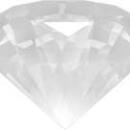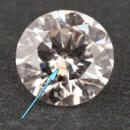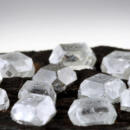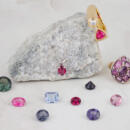Search Results
Fine Jewelry University Articles matching: “Synthetic diamonds”
Showing only FJU Article results. Click here to show all results.
Fine Jewelry University (Show All FJU Articles)
-
Synthetic Gems: The Whole Story
… made and can quickly be identified. Other synthetics are so well made it is impossible to id them in jewelry and can only be positively identified in gem labs with millions of dollars worth of equipment and world class personnel. Synthetic diamonds on the high end and synthetic quartz on the low end are both very difficult to positively identify as synthetic. Both, I feel, are impossible to identify in a piece of jewelry. Synthetic ruby, sapphire, alexandrite and emerald are very …
-

Fake Diamonds: The Great Diamond Attack
… (carbon element) and crystal structure (cubic) as natural diamond but made in a factory. Yes, they can make synthetic diamonds and have for many years now. Most are used in the manufacturing of tools like diamond tip drills. Synthetic diamond crystal … 1950’s. But, it just costs too much to justify using them. The technology is becoming more cost effective, and some synthetic diamonds are entering the market place now. Since they are the same chemistry as natural diamond, there is no easy test to …
-

What Are Lab Grown Diamonds?
… diamond. The same cannot be said of the many imitation or fake gems that are often, incorrectly, described as synthetic diamonds. This misrepresentation has seriously confused what the term “synthetic” means, and it’s why most producers of man-made …and grows a full diamond just like nature does under extremely high pressure and temperature. The newest way to grow synthetic diamonds is the Chemical Vapor Deposition (CVD) technique. In the CVD process, a chamber is filled with a carbon rich vapor. …
-

How Are Lab Grown Diamonds Made?
… and high temperature needed for diamond formation are naturally found. We see diamonds closer to the surface of the earth when a rare type of deep volcano brings them up to where humans can find and mine them. The first successful synthetic diamonds were made by mimicking nature with High Pressure/High Temperature (HPHT) manufacturing. There are three basic manufacturing processes used to make HPHT diamonds: the belt press, the cubic press, and the split-sphere (BARS) press. The …
-

How to Tell If a Diamond Is Natural or Lab Grown
…. If you are not familiar with lab grown diamonds, you might want to check out our introduction to lab grown and synthetic diamonds before continuing with this article. So, now you know that lab grown diamonds are just as real as natural diamonds, but … you be worried that your diamond is lab grown and no one told you? Probably not. The vast majority of gem quality synthetic diamonds being produced today are responsibly disclosed and sold as lab grown diamonds. Many major diamond suppliers have even …
-

Is a Lab Grown Diamond Right for Me?
… logical decision about what kind of diamond is right for you. First of all, if you’re not sure what a lab grown or synthetic diamond is, please check out our basic introduction to lab grown diamonds before reading on. So, how should you …of a lab-grown diamond is fairly comparable to natural diamonds. However, you can still save 10-30% with a lab grown synthetic over a natural in most cases. Also, the savings go way up if you are looking for a colored diamond (natural colored …
-

What are “Blood Diamonds”?
Conflict diamonds are diamonds illegally traded to fund conflict in war-torn areas, particularly in central and western Africa. The … action in opposition to those governments, or in contravention of the decisions of the Security Council.” These diamonds are sometimes referred to as “blood diamonds.” In July 2000, the global diamond industry made clear to the international… the Kimberley Process Certification System. This system was formally adopted in 2003 and guards against conflict diamonds entering the legitimate diamond supply chain. The diamond industry also adopted a voluntary System of Warranties to …
-

Gem in the Spotlight: Spinel
… create spinel in even more colors than it is naturally found in. Because of how easily it can be created in a lab, synthetic spinel has been used to imitate many other gemstones (ruby, sapphire, tourmaline, zircon, etc.). In fact, the …, along with inclusions can be used to separate the two. Natural spinel has a refractive index of 1.718 while its synthetic counterpart (depending on the process used) has a refractive index of 1.728. In recent years, scientists have developed…
-
Learn Secret Diamond Buying Skills From a Professional Diamond Buyer
… center of their universe. A diamond’s beauty energizes the whole person with a light show unique in the gem world. Diamonds are unique, just like the love it expresses, but unlike love we must put a value on a diamond. Understanding the 4 C’… else, supply and demand, but when you can carry a million dollars worth in your pocket the standards to evaluate diamonds are extremely exciting. The four C’s of carat, cut, color and clarity determine a common comparison. They don’t set the…